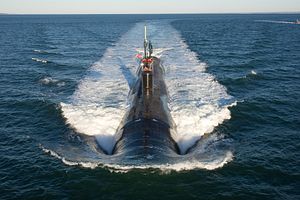This week, Singapore co-hosts the Asia Pacific Submarine Conference (APSC) with the United States. Founded in 2001, the APSC has established itself as a major forum dealing with submarine rescue, and this year reportedly saw the highest attendance with 23 navies and organizations.
At the conference, Chief of the Republic of Singapore Navy (RSN) Rear-Admiral Lai Chung Han delivered a speech, seen by The Diplomat, outlining how Asia should take multilateral submarine rescue cooperation “to the next bound.” More specifically, given the busyness and shallowness of some of the Asian waters as well as the rapid rise of submarines expected in the region over the next few years, Lai suggested that Asian nations should enhance submarine operational safety and proactively minimize the risk of incidents by developing a regional framework.
Such a framework, Lai argued, would comprise four elements. The first would be better information exchange. This would not involve sharing sensitive information about submarine positions and movements, but other sorts of information like the real-time movement of fishing vessels and very large crude carriers. He suggested that the effort could be supported by the Information Fusion Center (IFC) at the Changi Command and Control Center through a dedicated Submarine Safety Information Portal. In his view, the information platform, along with the extensive network of International Liaison Officers at the IFC and the information technology and command and control support of the Multinational Operations and Exercises Center, would provide robust infrastructure for this information exchange to occur.
The second element would be the sharing of best practices. While he acknowledged that some of this is already being done at APSC, he encouraged such exchanges to extend beyond just submarine rescue to encompass best practices, certification, and training to enhance the safety of navies and submarine operators.
The third element, Lai said, would be the setting of common standards. For instance, he recommended leveraging an established material safety standard, such as the United States Navy’s SUBSAFE regime, to ensure that submarines are in the best technical condition for safe operations.
The fourth element, and the most ambitious one, is coming up with a Code of Conduct for submarine operations or underwater “rules of the road.” He noted that given the confined and congested waters in some parts of the Asia-Pacific, there is a need to develop regulations for the underwater domain to help avert catastrophic incidents should submarines encounter each other unexpectedly underwater.
The challenges to such a regional framework are clear, and Lai acknowledged some of these himself. First, even the more basic elements of such a framework, such as information sharing, are hard to accomplish fully because of a classic catch-22: more information is required to build greater trust, yet it’s precisely the lack of initial trust — rooted in a range of factors including history, current geopolitical competition, and unresolved disputes — that often makes parties unwilling to share that information in the first place. While that does not make this an unworthy goal to strive for, it does mean that achieving it will not be as easy as it looks, even though the infrastructure exists and it makes sense to do so.
Second, although the sharing of best practices and the adoption of common standards may seem like no-brainers, they may take time to implement fully in practice. In reality, the speed through which practices are shared and standards are harmonized is the product of a variety of factors, including the extent to which there is similarity in capabilities; the degree to which different countries exercise with each other to facilitate interoperability; and, of course, the level of willingness of the different actors to make this a priority.
Third and lastly, the wide divergence in the experience of Asian states — both in terms of operating submarines as well as cooperation on submarine safety — will likely make the specifics of a regional framework more complicated. While some countries have robust submarine fleets, other major states have just acquired them within the past few years and still others have plans in the pipeline to get them in the future. That has significant implications for designing a regional framework, including the dilemma usually inherent in such arrangements about how to balance inclusivity and high standards.
Given these challenges as well as others, Lai was right to note that Asia has a long way to go before getting anywhere near the North Atlantic Treaty Organization’s (NATO) preventive system for submarine operational safety, which has the Submarine Movement Advisory Authority deconflicting underwater activities as well as endorsed procedures and standards by NATO’s International Submarine Escape and Rescue Liaison Office. But he was also right to stress that while this is probably a bridge too far, that should not stop countries from taking small steps now. Otherwise, as he gloomily suggested, it may not be a matter of whether, but when, a submarine-related crisis occurs in the future in the Asia-Pacific.































